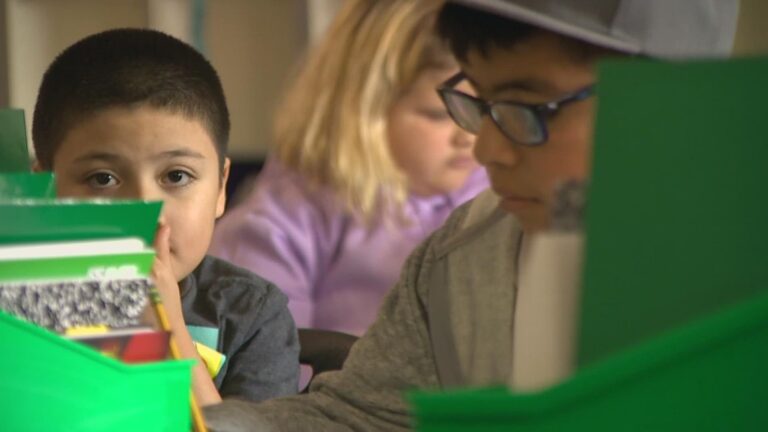State School Superintendent Chris Reykdal wants all K-8 schools to offer dual language programs by 2040.
MOUNT VERNON, Wash — A Mount Vernon elementary school is modeling what Washington’s Superintendent of Public Instruction wants for the entire education system by 2040: bilingual education.
It’s a new school year and a new language for a lot of the kids at Mount Vernon’s Madison Elementary.
The school has been fully bilingual since 2019. Parents choose to send their kids there for that very reason. Everything is done in both English and Spanish.
Fifth grader Olivia Ruiz says it helps bring kids together.
“A lot of my friends speak Spanish more fluently than I do,” said the 11-year-old. “If I forget something or I don’t know how to say something they can help me out.”
A proposal by State School Superintendent Chris Reykdal would allow parents to opt into dual language programs in some school districts as early as 2026.
The proposal is awaiting funding from the state legislature.
About $19 million is needed to get the program up and operating for the first two years. Currently, 35,000 students spanning 42 Washington school districts learn in dual language programs.
Reykdal wants programs offered in all districts by 2040.
“The evidence is clear,” said Reykdal. “When young people become bilingual during the early grades, they have more cognitive flexibility and they perform better in school. As our global economy changes and our world becomes increasingly international, dual language education must become a core opportunity for our students.”
There is also criticism of some dual language programs.
They are often inconsistent.
Washington’s program would stop before high school, meaning some students could lose much of what they learned in earlier grades. Difficult subjects can also be even harder to grasp.
For students struggling with a subject, a foreign language can be another hindrance.
Also, studies show it takes seven years for a second language to fully “click” with kids, so academics in the early years may suffer.
Teacher Cecilia Guzman-Marron, however, says further research shows the benefits outweigh any drawbacks.
“As soon as they hit that seven-year point where it starts to click they start to surpass their peers in monolingual programs,” Guzman-Marron said.
Guzman-Marron is a daughter of immigrants and didn’t learn English until kindergarten.
She started out despising school because she couldn’t understand what was going on.
She believes bilingual classrooms are about much more than learning a language.
They’re also about teaching compassion.
“Knowing that was me as a student and seeing those kiddos and those families come into my classroom, they will never have to feel like they can’t communicate with their teacher because someone in this building can communicate with them in their language,” she said, tears welling up in her eyes. “It’s a gift. Why not accept it?”
Spanish would likely not be the only alternative to English.
Several other languages including Vietnamese and some Native American dialects could be offered, as well.



